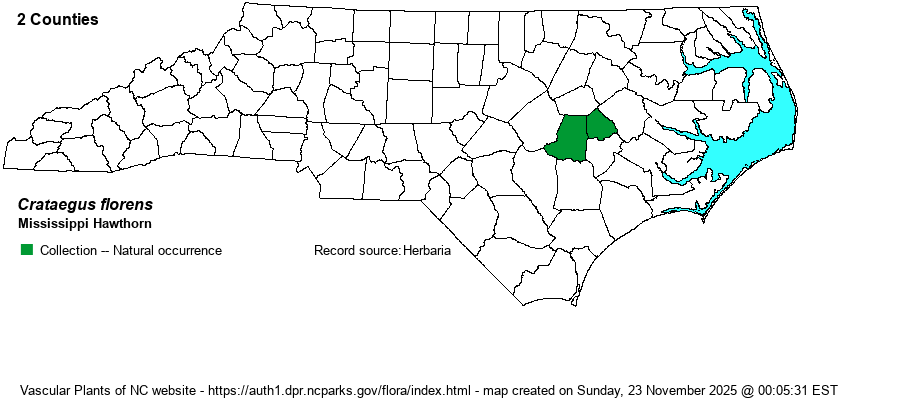| Author | Beadle | |
| Distribution | This is a recently elevated taxon to full species status, and is limited in NC to the southern half of the Coastal Plain. Though the only specimen records so far are known from two counties in the middle of the Coastal Plain, which contain no notable or unusual soils or habitats, it can be assumed to occur widely from these counties to the SC state line. Thus, the map below is highly incomplete.
The species ranges from eastern NC south to central FL, and west to MS. | |
| Abundance | Poorly known, but as specimens exist from two counties with common habitats, it likely must be fairly common. Nonetheless, Weakley (2018) shows "rare", as does Lance (2014). It is on the NCNHP Watch List. | |
| Habitat | Weakley (2018) gives it habitats as "Pine and pine-oak forests, subxeric to mesic habitats with sandy or clay soils." | |
| Phenology | Blooms in April, and fruits in August and September. | |
| Identification | This is a medium to large deciduous shrub, growing to 10-15 feet tall. It is notable in having the outer parts of the branches drooping. The leaves are shiny above and are narrowly cuneate at the base but almost rounded otherwise, with small serrations; as such, the overall impression is of spatulate leaves. For other characters, see Weakley (2018) or Lance (2014). | |
| Taxonomic Comments | Lance (2014) considered this taxon as a variety -- C. alabamensis var. florens. This taxon, as with many others, was formerly lumped into the C. flava complex; however, C. flava no longer exists as a valid species. Weakley (2018) considers the taxon as distinct from C. alabamensis var. alabamensis and deserves species status. The Flora of North America website also gives full species status to C. florens.
| |
| Other Common Name(s) | None | |
| State Rank | S2? | |
| Global Rank | GNR | |
| State Status | W7 | |
| US Status | | |
| USACE-agcp | | |
| USACE-emp | | |

